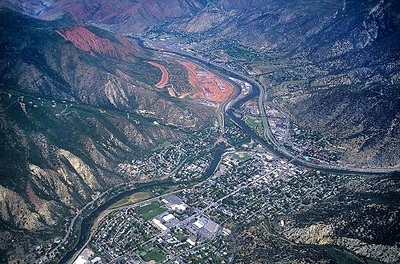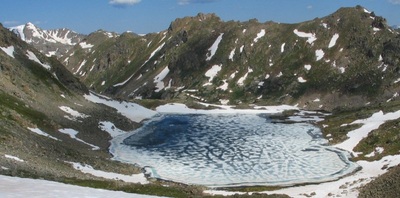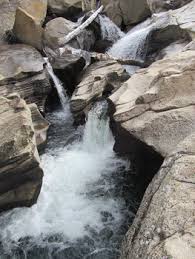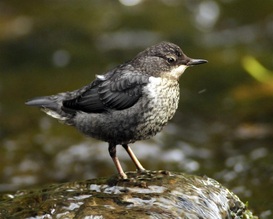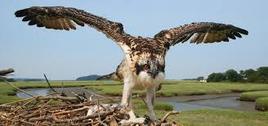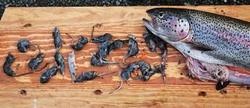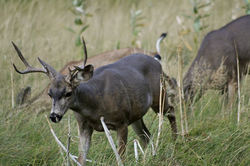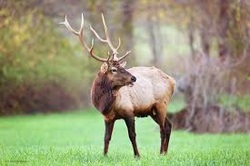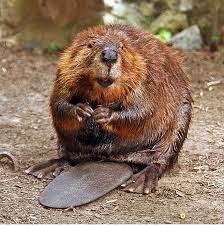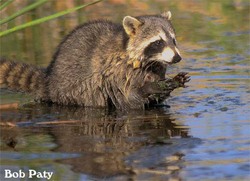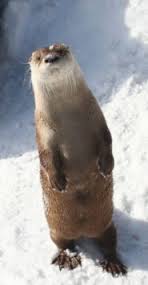Riparian Ecosystem
By: Diego, JP, Kosma, and Oliver
The riparian ecosystem is very interesting to learn about.
It is one of the most important areas in the world. An riparian ecosystem is an area with water. In Colorado it could look like the Colorado River and Roaring Fork River, or lakes, or small streams. The Roaring Fork River starts at the Continental Divide. Most of the water in our riparian systems comes from snow and melts into the lakes and rivers.
Carnivores Herbivores Omnivores
|
Two riparian carnivores are:
They can also be called predators. Abiotic Characteristics
This ecosystem is very important for supporting many plants, animals, and birds. There is very little amount of land in riparian ecosystems. Only one percent of land is riparian area. They have many features that help the whole world. This dipper is an indicator specimen. An Indicator tells if it is a healthy ecosystem.
An osprey snatching a Rainbow trout
out of the water. A rainbow trout next to the mice it ate.
Wildlife Habitat
An abundance and diversity of a riparian ecosystem is influenced by the amount of water. Riparian ecosystems provide reliable sources of water. The diversity and abundance of wildlife in riparian zones is higher than in an adjacent community. Bird Habitat
The type of wildlife habitat found along the banks of a river, stream, lake or other body of water. Riparian habitats are ecologically diverse and may be home to a wide range of plants, insects and amphibians that make them ideal for different species of birds. Riparian areas can be found in many types of habitats, including grassland, wetland and forest environments. Birds that prefer riparian habitats include a wide range of species such as finches, warblers, swallows, woodpeckers, flycatchers, herons, rails, egrets, dippers and water fowl. Birds
VERMILLION FLYCATCHER HABITAT: A spectacular and distinctive flycatcher, the bright red Vermilion Flycatcher inhabits riparian areas and scrub in the southwestern US and southward. It perches conspicuously, making periodic flights to nab insect prey. DIET: Insects and other arthropods. GREAT BLUE HERON Habitat: The Great Blue Heron lives in communities called rookeries that they build along rivers, lakes and ponds throughout America. A single tree can hold a dozen nests. Like the Bald Eagle the Blue Heron returns to the same nest every year. Diet: The Great Blue Heron is a predator which hunts mostly fish, but also frogs, salamanders, lizards and small mammals. The Bald Eagle
Habitat: They build nests in strong trees. Diet: These predators hunt fish, as well as ducks, rabbits, and snakes and other small animals White-Tailed Ptarmigan
DIET: This bird’s diet changes seasonally. “Nitrogen-rich snow buttercup leaves are favored in the spring season, while willow catkins, mountain avens flowers, and chickweed blooms, other flowers and leaves, lichens and berries form the majority of the ptarmigan's diet in the summer. Once fall and winter arrive in the region, the ptarmigan feeds on pine needles, seeds, willow and alder buds and twigs.” Habitat: “The white-tailed ptarmigan is the only bird in North America to reside permanently in the alpine zone. Its habitat includes areas of boulders, krummholz, snowfields, rock slides, frost-heaved soil and upland herbage.Even in winter it stays in high valleys and mountain slopes where alder, willow, birch and spruce poke through the snow cover.” Osprey
Habitat: “In North America it breeds from Alaska and Newfoundland south to the Gulf Coast and Florida, wintering further south from the southern United States through to Argentina.” DIET: The osprey eats mainly fish but can also eat rodents, rabbits, hares, amphibians, other birds,and small reptiles. |
Herbivores are animals that eat plants:
2. Elk - Mostly riparian forest areas.
3. Beaver - A dam in a river which has to be in a riparian area.
Plants
Moss Moss is mostly found on the ground around trees and the side of river which can be found in riparian ecosystem. Scientists have found it to be a great DNA repair plant for many other plants in the riparian ecosystem. Some of mosses ancestors started to move around on this land about 470 MILLION years ago!!! They absorbed minerals and CO2 to become what they are now. Cattails
Cattails are not very rare in the USA. They are mostly found in riparian ecosystems and marshes. The scientific name for the cattail is the Typha. The cattails leaves can be used for make paper. It can also be use for making ethanol. Cattails can be dipped into wax or fat and be used as candles. Lodgepole Pine
The Lodgepole Pine is also known as the Pinus Contorta. It is a high altitude tree. It mostly grows in high altitude riparian ecosystem. This wonderful tree is threatened by Blue Stain Fungus. Blue Stain Fungus is distributed by the mouth of the Mountain Pine Beetle. Rocky Mountain Columbine
The Rocky Mountain Columbine became the Colorado State flower in 1899. The school kids of Colorado got to vote on what flower would be the state flower of Colorado. It was discovered in 1820 on Pikes Peak. Hummingbirds and Butterflies are attracted to it because of its nectar. There are over 70 species of Columbines in the world. Willows
Willows are shrubs that grow in low and high altitude riparian ecosystems. They don’t grow very tall. They mostly grow on wet and cold soils. It can be used to make charcoal to make art. It is sometimes used for making fuels like biomass or biofuel. Colorado Blue Spruce
The Colorado Blue Spruce lives best near lots of water. It is the state tree of Colorado. The scientific name of the Colorado Blue Spruce is Picea Pungens. Fish Habitat
Riparian zones are good habitat for fish. Trees provide shade for the fish to keep cool and twigs and leaves fall into the river for fish to live in. Many bugs live in the trees and they can fall into the river which provides food for the fish. |
Some riparian ecosystem omnivores are:
1. Racoon Habitat- They mostly live in forests with a river in it. Diet- They eat both plants and animals. Some plant foods are all types of fruits and all types of grains. 2. Northern River Otter Habitat - It is mostly found in riparian river areas. Diet - They mostly eat fish and plants in the rivers they live in. Low Altitude Plants and Trees
There are too many plants to name in the lower riparian ecosystems to name them all. But some of the trees are: Narrowleaf cottonwood, Colorado Blue Spruce, Box Elder, Hackberry, River Birch, Hawthorn, Willow, Single leaf Ash, and Chokecherry. Some plants are Cattails, Milkweed, Buffaloberry, Snowberry, Watercress, Sunflower, Poison Ivy, Golden Currant, Wild Licorice, Mare’s Tail, Asteraceae, Several different type of grasses also grow in riparian areas.. Threats To The Riparian Ecosystem
Riparian zones are threatened by a variety of factors including (1)overgrazing, (2) logging, (3) agriculture, (4) building dams, and (5) human development. Conservation and restoration Currently, maintaining and restoring riparian zones is an important conservation goal. Managers attempt to maintain this natural buffer within the floodplain by reducing the threats listed above. In addition, there are many efforts to restore ecosystem function of healthy riparian zone by replanting native riparian vegetation. Works Cited
|

